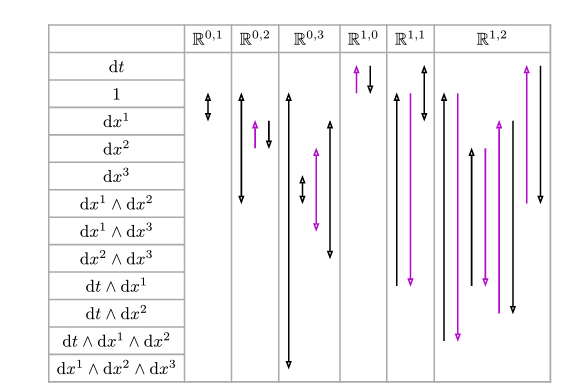Hi. You did not provide the specification, nor the compilable example, and how it now stands, the question in the title was already answered.
I tried a bunch, but it all seems very limited.
#table(
columns: 2,
align: center,
table.header()[][123],
..range(1, 7).map(body => table.cell(x: 0)[#body]),
table.cell(rowspan: 6, inset: 0pt, canvas(length: 1.6em, {
import draw: *
line((), ())
line((0, -1), (0, -5), mark: (symbol: ">"))
line((1, -2), (1, -4), mark: (symbol: ">"))
})),
)
#let lines(rows: 10, ..coords-list) = {
table.cell(rowspan: rows, inset: 0pt, canvas(length: 1.6em, {
import draw: *
line((), ())
for (x, start, end) in coords-list.pos() {
line((x, -start), (x, -end), mark: (symbol: ">"))
}
}))
}
#table(
columns: 2,
align: center,
table.header()[][123],
..range(1, 7).map(body => table.cell(x: 0)[#body]),
lines(
rows: 6,
(0, 1, 5),
(1, 2, 4),
),
)
#let lines(rows: 10, start: 0, end: 10, ..coords-list) = {
let rest = rows - (end - start)
let arrows = canvas(length: 1.6em, {
import draw: *
line((), ())
translate((0, rest))
for (x, start, end) in coords-list.pos() {
line((x, -start), (x, -end), mark: (symbol: ">"))
}
})
(..([],) * start, table.cell(y: rest, rowspan: end - start, inset: 0pt, arrows))
}
#table(
columns: 2,
align: center,
table.header()[][123],
..range(1, 7).map(body => table.cell(x: 0)[#body]),
..lines(
rows: 6,
start: 1,
end: 5,
(0, 1, 5),
(1, 2, 4),
),
)
A table wrapper looks just right:
#import "@preview/cetz:0.3.4": *
#let lines(rows: 10, start: 0, end: 10, x: 1, ..coords-list) = {
let rest = start + 1
let arrows = canvas(length: 1.6em, {
import draw: *
line((), ())
translate((0, rest))
for (x, start, end) in coords-list.pos() {
x = x * 0.8
line((x, -start), (x, -end), mark: (symbol: ">"))
}
})
table.cell(x: x, y: rest, rowspan: end - start, inset: (y: 0pt), arrows)
}
#let arrow-table(column-headers: (), row-headers: (), ..column-arrow-list) = {
let column-arrow-list = column-arrow-list.pos()
table(
columns: column-headers.len() + 1,
align: center,
table.header([], ..column-headers),
..row-headers.map(body => table.cell(x: 0)[#body]),
..column-arrow-list
.enumerate(start: 1)
.map(((x, arrow-list)) => {
lines(
rows: row-headers.len(),
start: calc.min(..arrow-list.map(arrow => arrow.at(1))),
end: calc.max(..arrow-list.map(arrow => arrow.at(2))),
x: x,
..arrow-list,
)
})
.flatten()
)
}
#arrow-table(
column-headers: range(1, 5).map(str),
row-headers: range(1, 7).map(str),
(
(0, 1, 3),
),
(
(0, 1, 5),
(1, 2, 4),
),
(
(0, 0, 6),
),
(
(0, 0, 2),
(1, 1, 3),
(2, 2, 4),
(3, 3, 5),
(4, 2, 6),
)
)

